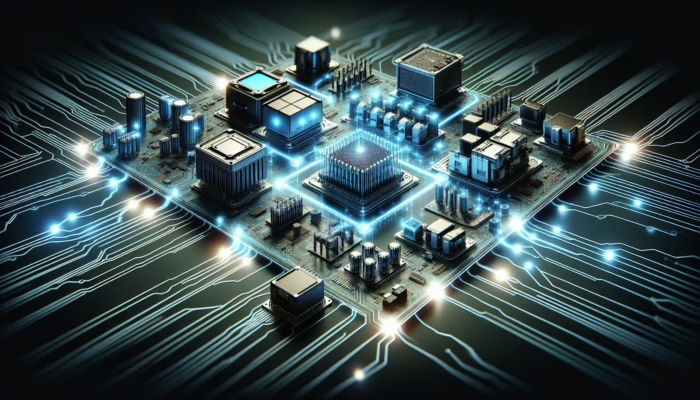In the swiftly changing realm of digital technology, data services have emerged as the crucial backbone of modern telecommunications infrastructure. These indispensable services play a pivotal role in connecting individuals, businesses, and organisations, enabling seamless communication and data transmission across the globe. From high-speed internet to cloud computing, data services have fundamentally transformed our access to and use of information, driving innovation and fostering economic growth. This article explores the significance of data services in the telecommunications sector, highlighting their diverse applications and future prospects.
Explore the Evolutionary Journey of Data Services in Telecommunications
Data services have experienced a remarkable evolution over the years, adapting to the ever-increasing demand for faster and more reliable connectivity. Historically, traditional telecommunication systems predominantly relied on analog signals, which significantly restricted the volume of data that could be transmitted effectively. With the advent of digital technology, data services underwent a substantial paradigm shift. Digital signals allow for the transmission of vast quantities of data, leading to the development of advanced communication networks and services that redefine connectivity.
The advancement of data services has been driven by a multitude of factors, including breakthroughs in fibre optic technology, the expansion of data centres, the establishment of robust network infrastructure, and the implementation of rigorous data security measures. These elements work in tandem to enhance the speed, reliability, and security of data transmission, ensuring users enjoy optimal connectivity experiences. As technology continues to evolve, the landscape of data services will undoubtedly undergo further transformations, catering to increasingly complex user needs.
Delve into the Vital Components of Data Services

Data services consist of a diverse array of technologies and infrastructure components that work harmoniously to facilitate efficient and secure data transmission. Let us examine the essential components in greater detail:
1. Achieving Unmatched Speed and Reliability with Fibre Optic Cables
Fibre optic cables form the backbone of data services, ensuring high-speed transmission of digital data over extensive distances. These advanced cables utilise pulses of light to convey data, offering significant advantages over traditional copper cables. With the capability to transmit large volumes of data at exceptionally high speeds, fibre optic cables have become an indispensable component of modern telecommunications infrastructure.
The benefits of fibre optic cables are numerous, including increased bandwidth, immunity to electromagnetic interference, and minimal latency. These attributes facilitate quicker data transmission, resulting in faster internet speeds and enhanced overall network performance. Furthermore, fibre optic cables have a higher capacity for data transfer, allowing for the smooth transfer of large files, high-quality video streaming, and real-time communication, all of which are essential in today’s data-driven world.
2. Understanding the Central Role of Data Centres in Modern Computing
Data centres serve as the critical hubs for data storage, processing, and distribution. These facilities house an extensive network of servers and computing equipment, ensuring reliable and secure access to data. Data centres are vital in supporting various data services, including cloud computing, streaming services, and online storage solutions.
Data centres are equipped with the necessary infrastructure to store and manage large volumes of data effectively. They employ sophisticated technologies such as virtualisation and storage area networks to optimise data storage and retrieval processes. By leveraging the capabilities of data centres, businesses can scale their operations, reduce infrastructure costs, and significantly enhance the availability and accessibility of their critical data, which is crucial for maintaining a competitive edge in the market.
3. Building Essential Networking Infrastructure for Seamless Data Transmission

The network infrastructure consists of routers, switches, and other networking devices that facilitate the efficient flow of data among various locations. These components create the physical and virtual pathways through which data traverses, ensuring connectivity across local and wide-area networks. A robust and scalable network infrastructure is essential for delivering high-quality data services.
Routers and switches are the foundational elements of network infrastructure, enabling the efficient routing and switching of data packets. They direct data traffic along the most optimal routes, guaranteeing rapid and reliable transmission. Additionally, network infrastructure components support various networking protocols, such as Ethernet and IP, which are vital for ensuring smooth communication between devices. The continual enhancement of network infrastructure is paramount for accommodating the increasing demands placed on data services.
4. Implementing Comprehensive Security Measures to Safeguard Data
As the volume of data being transmitted and stored continues to grow, ensuring data security has become an increasingly critical concern. Data services incorporate various security measures, including encryption, firewalls, and intrusion detection systems, to protect sensitive information from unauthorised access or breaches. These measures are essential for maintaining user trust and safeguarding valuable data assets.
Encryption plays a crucial role in data security by transforming data into an unreadable format that can only be deciphered using the appropriate decryption key. Firewalls function as barriers between internal networks and external threats, diligently monitoring and controlling incoming and outgoing network traffic. Intrusion detection systems are designed to identify and respond to potential security breaches, ensuring the integrity and confidentiality of sensitive data. The implementation of robust security measures is imperative for the protection of both individuals and organisations in the digital landscape.
Discovering the Diverse Applications of Data Services Across Industries
Data services have found applications across a broad spectrum of sectors and industries, fundamentally altering how businesses operate and individuals communicate. Let us explore several notable applications:
1. Enabling Accessible High-Speed Internet Connectivity for All

High-speed internet connectivity serves as the cornerstone of data services, empowering individuals and businesses to tap into a vast reservoir of information, communicate in real-time, and engage in various online activities. Internet service providers (ISPs) leverage data services to deliver rapid and reliable internet connections to homes, offices, and public spaces.
With the assistance of data services, users can effortlessly browse the internet, stream multimedia content, partake in video conferences, and engage in e-commerce transactions. High-speed internet access has transformed the way we consume information, connect with others, and conduct business operations, making it an integral part of modern life. The increasing demand for reliable internet connectivity further underscores the importance of data services in shaping our digital experiences.
2. Harnessing the Transformative Power of Cloud Computing
Data services provide the essential foundation for cloud computing, where storage, processing, and software applications are delivered via the internet. Cloud computing enables businesses to access scalable computing resources, thereby reducing infrastructure costs and boosting productivity. This technology fosters seamless collaboration, data sharing, and remote access to crucial applications.
Cloud computing heavily relies on data services for the storage and management of vast amounts of data within remote data centres. Users can access their data and applications from any device connected to the internet, eliminating the need for physical storage devices and local software installations. This flexibility and scalability offered by cloud computing have revolutionised the way businesses operate and leverage technology to achieve their goals, enhancing overall operational efficiency.
3. Revolutionising Industries with the Internet of Things (IoT)
The Internet of Things (IoT) relies significantly on data services to facilitate communication between interconnected devices. IoT devices, including smart home appliances, wearables, and industrial sensors, generate and transmit enormous amounts of data. Data services enable the efficient collection, analysis, and utilisation of this data, driving advancements in areas such as smart cities, healthcare, and logistics.
Data services ensure seamless connectivity and data exchange between IoT devices and the cloud. Real-time data transmission and analysis empower organisations to monitor and control IoT devices remotely, optimise operations, and deliver personalised services. The integration of data services and IoT has the potential to transform industries, enhance efficiency, and improve the overall quality of life, making our environments smarter and more responsive to our needs.
4. Unlocking Insights and Opportunities with Big Data Analytics
Data services are instrumental in facilitating big data analytics, where vast volumes of data are analysed to extract valuable insights and patterns. Organisations leverage data services to store, process, and analyse data from diverse sources, enabling data-driven decision-making and business intelligence. This application has significantly transformed industries such as finance, marketing, and healthcare.
Data services provide the infrastructure and tools necessary for storing and processing massive datasets. They support distributed computing frameworks, such as Apache Hadoop and Spark, which enable parallel processing of data across multiple servers. By harnessing the power of data services, organisations can uncover hidden patterns, trends, and correlations that drive business growth and spur innovation in various sectors, making data an invaluable asset in today’s competitive landscape.
Exploring the Promising Future Prospects of Data Services
The future of data services within the telecommunications industry appears highly promising, with numerous advancements on the horizon. Let us examine some key areas of development:
1. The Revolutionary Impact of 5G Networks on Data Services
The rollout of 5G networks is set to revolutionise data services, offering ultra-fast speeds and dramatically reduced latency. This cutting-edge technology will facilitate seamless connectivity for a multitude of devices, paving the way for innovative applications such as autonomous vehicles, augmented reality, and smart infrastructure.
As 5G networks become more prevalent, data services will achieve unprecedented levels of performance, delivering faster download and upload speeds, minimal latency, and enhanced network capacity. This evolution will create opportunities for transformative technologies that rely on real-time data transmission and processing. The widespread adoption of 5G networks will further fuel innovation and stimulate economic growth, fundamentally altering the telecommunications landscape.
2. Enhancing Real-Time Processing Capabilities with Edge Computing
Edge computing, a decentralised computing model, aims to bring data processing closer to its source. By minimising the distance that data needs to travel, edge computing reduces latency and enhances real-time data processing capabilities. This technology will play a pivotal role in supporting data-intensive applications and enabling efficient edge devices, such as smart sensors and drones.
Data services will be crucial in facilitating edge computing by providing the necessary infrastructure and connectivity. Edge devices will depend on data services to transmit and process data in real-time, allowing for quicker response times and improved decision-making at the edge. The combination of edge computing and data services will unlock new possibilities across various domains, including autonomous vehicles, smart cities, and industrial automation, significantly enhancing operational efficiency and responsiveness.
3. Harnessing the Power of Artificial Intelligence to Transform Data Services
The integration of artificial intelligence (AI) with data services presents enormous potential. AI algorithms can analyse vast datasets in real-time, enabling predictive analytics, personalised recommendations, and automated decision-making. This synergy between AI and data services will drive innovation across various sectors, transforming industries and enhancing user experiences.
Data services provide the essential foundation for AI-powered applications by offering the requisite data storage, processing, and transmission capabilities. AI algorithms rely on data services to access and analyse diverse datasets, facilitating intelligent decision-making and automation. As AI technology continues to advance, data services will be pivotal in harnessing its capabilities and creating intelligent systems that enhance productivity and facilitate new forms of human-computer interaction, driving progress in numerous fields.
Frequently Asked Questions Regarding Data Services
1. What are the Key Components of Data Services?
The key components of data services encompass fiber optic cables, data centres, network infrastructure, and data security measures.
2. What are the Applications of Data Services?
Data services are employed in various applications, including internet connectivity, cloud computing, Internet of Things (IoT), and big data analytics.
3. How do Fibre Optic Cables Contribute to Data Services?
Fibre optic cables enable high-speed transmission of digital data over long distances, offering increased bandwidth, immunity to electromagnetic interference, low latency, and a higher capacity for data transmission.
4. What is the Future Prospect of Data Services in the Telecommunications Industry?
The future prospects of data services include the deployment of 5G networks, the advancement of edge computing, and the integration of artificial intelligence (AI) for predictive analytics and automation.
Originally posted 2023-08-13 22:31:32.
The post Data Services: Essential for Modern Telecom Infrastructure appeared first on Healthcare Marketing Service.

